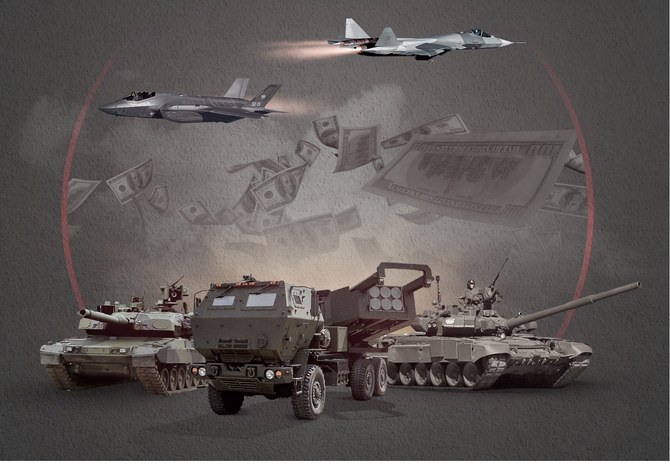
The world is bracing for a new era of militarization, with global defense spending projected to reach a staggering $2.13 trillion in 2024. This 2.74% spending increase from 2023 reflects a complex interplay of geopolitical tensions, technological advancements and a growing focus on unconventional threats. From the skies to the battlefield, let’s explore the key trends shaping the future of the global defense industry.
Geopolitical tensions fuel the fire
The war in Ukraine and the growing conflict in Israel have cast a long shadow, prompting nations to bolster their defenses and invest in advanced weaponry. Cyberwarfare capabilities, drones and electronic warfare systems are in high demand as countries prepare for potential conflicts in the digital domain and beyond. Additionally, rising tensions between China and Taiwan are reshaping the military landscape in Asia-Pacific, with regional powers scrambling to maintain a technological edge.
Tech revolutionizes the battlefield
Artificial intelligence, robotics and autonomous systems are transforming the nature of warfare. From unmanned aerial vehicles conducting precision strikes to AI-powered intelligence gathering, these technologies are blurring the lines between humans and machines on the battlefield. However, ethical considerations surrounding autonomous weapons and the potential for misuse raise critical questions about the future of war.
Airborne platforms take flight
Army modernization takes center stage
The traditional army remains a critical force despite the focus on cutting-edge technology. Modernization initiatives are underway worldwide, with countries upgrading armored vehicles, improving artillery and missile systems and investing in future soldier technologies. This renewed focus on ground forces reflects the enduring need for a well-equipped and adaptable military presence.
Asia-Pacific and North America lead the pack
While the global defense market is expanding, regional disparities are evident. North America, driven by the substantial U.S. defense budget and advanced defense industries, is projected to maintain its dominant position. However, the Asia-Pacific region is witnessing a surge in defense spending, with countries like India, Japan, and South Korea leading in the acquisition of next-generation weapons systems.
Beyond the battlefield
The environmental impact of military activities is gaining traction, prompting the development of green technologies for defense operations. Renewable energy sources for military bases, responsible waste management and the integration of sustainable materials into weaponry are some examples of this emerging trend. Additionally, ethical considerations surrounding the use of autonomous weapons and the potential for civilian casualties in war necessitate ongoing discussions and regulations.
The global defense industry is at a crossroads, propelled by technological advancements, geopolitical uncertainties and a growing awareness of ethical and environmental concerns. As nations navigate this complex landscape, the future of warfare promises to be a fascinating and ever-evolving field.
